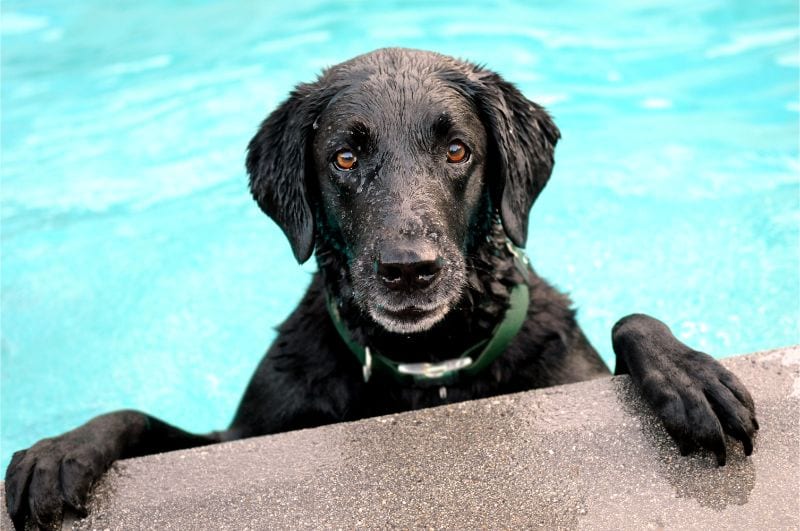
What could be better than a water-loving dog? Never short on enthusiasm, these pups will take to the water anytime, anyplace. Sprinklers, creeks, pools, and puddles are among their favorite spots to scamper and splash, but just because water makes them happy doesn’t mean it’s always safe. There could be hidden dangers floating on or around their preferred watering hole.
Taking your dog swimming or wading can still be a wonderful activity, as long as you keep some key safety strategies in mind.
Can That Taste Good?
Water-borne illnesses are major threats to a wading or swimming dog. Shallow or stagnant water are perfect incubators for these and can be passed from one animal to another.
- Read the signs around bodies of water. No fishing or swimming signs mean that the water isn’t safe for your dog.
- Don’t allow your dog to drink from a pond that has a funky or fishy smell.
- Never stop near water sources by treatment facilities.
- Always provide fresh, clean water when out and about with your dog. Train them to only drink water from their bowl.
Risks in the Water
Dog owners aware of what can be in certain bodies of water are more likely to persuade their dogs to move on. The following common water-borne diseases include:
- Leptospirosis – Distributed by mammals, this illness occurs after exposure to infected urine or water. Antibiotics are necessary to clear symptoms like fever, vomiting, diarrhea, and inappetance – but kidney and liver damage necessitate hospitalization and supportive care. Vaccination can help minimize severity.
- Giardiasis – Caused by protozoa, this illness results in diarrhea. Dewormers and antibiotics increase the chance of a good prognosis.
- Cyanobacteria – Also known as blue-green algae, the pea soup-looking bloom can be fatal even if a few small gulps are swallowed. Dangerous symptoms require immediate veterinary treatment.
- Pythiosis – While quite rare, this illness from a fungus can cause skin lesions, bloody stools, and weight loss.
- Protothecosis – Caused by a type of algae, skin infections, diarrhea, and central nervous system signs are side effects. Anti-fungal treatment is required.
Take Your Dog Swimming
There are some excellent alternatives regarding where to take your dog swimming. Pools that have chlorinated water are safe enough, although some dogs may be sensitive to the common chemical. Be sure they aren’t drinking the water, and do your best to minimize chlorinated water getting into their eyes, nose, or mouth.
- Always rinse your dog off thoroughly.
- Be sure there are proper exits
- Outfit them with their own personal flotation device
- Never take your eyes off them in the water
- Brush up on pet CPR
The beach is another wonderful place to take your dog swimming, just be sure to keep a close eye on the weather, current, riptide, and hydration. Overexposure to the sun can be very dangerous.
A river, stream, or lake can also be lovely, but due to high volume of fishing, hooks, bait, and other debris can endanger your dog.
In Control
While you can decide whether to take your dog swimming, they’ll still find odd places to lap up a drink. Try to dump out any water accumulated in the backyard, and just to err on the side of safety, inhibit their curiosity while out together by always providing fresh water in their own bowl.
Schertz Animal Hospital is always here for your dog. Please let us know if you have further questions about where to take your dog swimming.
Recent Posts
About Us
We know that choosing the right veterinarian for your pet (and you) can be a challenge. Yet, with our stress-free handling, our long-term, experienced staff, and a state-of-the-art facility, we make the decision an easy one!
